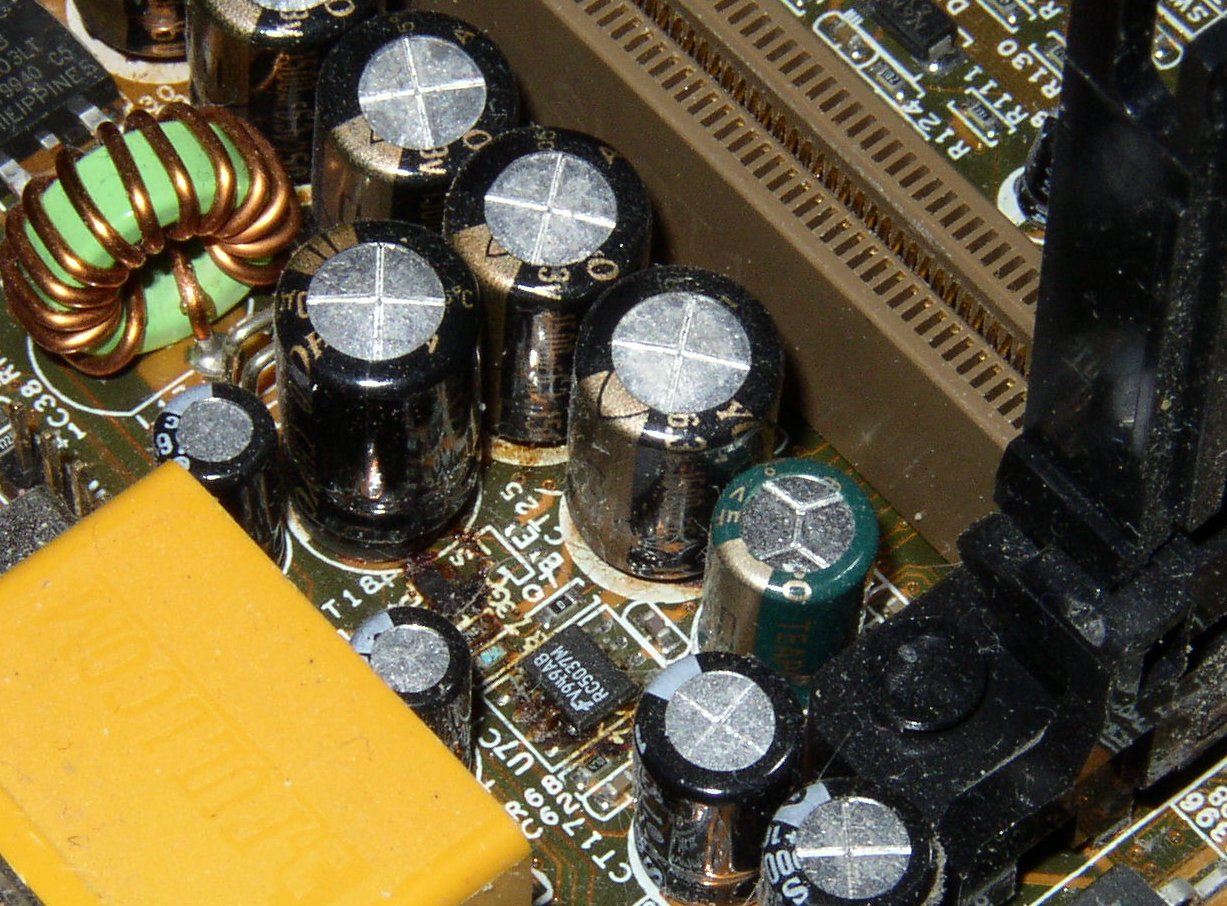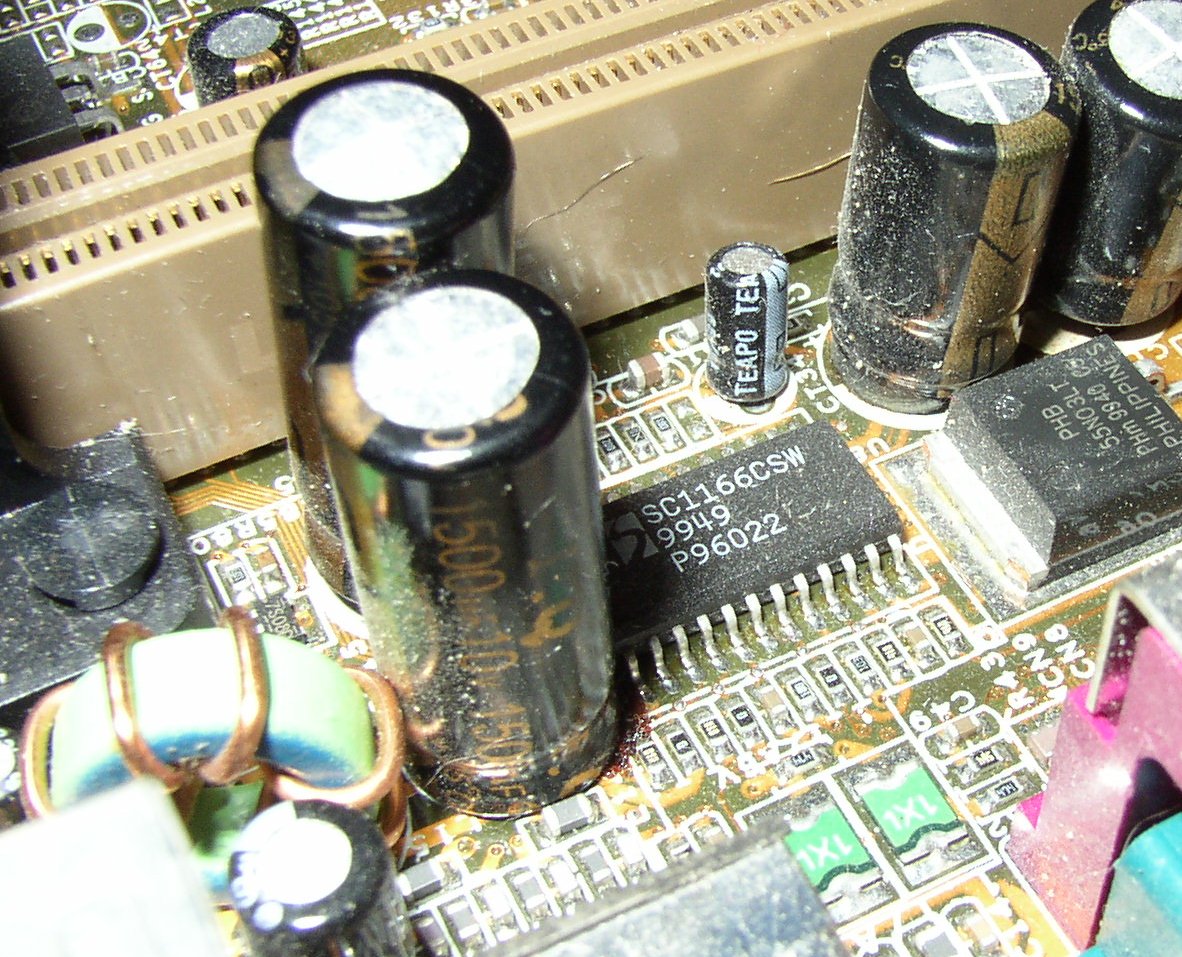Quotes...
QUOTE
What is Badcaps.net?
More than likely, if you're even reading this, you know what this site is about... Incase you don't, I'll enlighten you. This site was created to counter the bad capacitor problem that has been plaguing computer motherboards since about 1999 to the present day. It now being 2006, I am STILL seeing later model P4 and Athlon boards with this problem. The tale behind why the capacitor problem exists in the first place is because of a large-scale industrial espionage foul-up. Some component manufacturers decided to steal an electrolyte formula from another competitor. Little be known to them, the stolen formula was incomplete and flawed. They didn't discover this until it was too late and they had manufactured and distributed literally MILLIONS of these flawed capacitors. However, it's been going on way too long to blame on industrial espionage in my humble opinion, as this problem is still extremely common, and hasn't slowed down. Personally, I think it all boils down to shoddy components that are manufactured by shoddy component makers.
Over the years, there have been massive quantities of name-brand, high quality motherboards failing prematurely due to these faulty electrolytic capacitors used in their manufacturing process. This has doomed MANY popular and expensive brands of motherboards, including: Abit, Asus, MSI, Gigabyte, Supermicro, DFI, Dell, Hewlett Packard, IBM, and MANY more! The objective here isn't to smear the names of these manufacturers, as AT THE TIME they had no clue they were purchasing shoddy components until after the damage was already done... Sadly, some manufacturers continue to use these shoddy capacitors even after this issue became public. If your board has fallen victim to this dilemma, This site can aid in remedying it without completely scrapping and replacing your PC.
Most all the information about this problem is scattered in bloated forums, newsgroups, and unreliable (here today, gone tomorrow) websites. That in itself is enough to make you throw your board in the trash! I've gathered a lot of information, along with my own knowledge and experience, and created a central location to post it. Hopefully this will bring your search to an end!!
More than likely, if you're even reading this, you know what this site is about... Incase you don't, I'll enlighten you. This site was created to counter the bad capacitor problem that has been plaguing computer motherboards since about 1999 to the present day. It now being 2006, I am STILL seeing later model P4 and Athlon boards with this problem. The tale behind why the capacitor problem exists in the first place is because of a large-scale industrial espionage foul-up. Some component manufacturers decided to steal an electrolyte formula from another competitor. Little be known to them, the stolen formula was incomplete and flawed. They didn't discover this until it was too late and they had manufactured and distributed literally MILLIONS of these flawed capacitors. However, it's been going on way too long to blame on industrial espionage in my humble opinion, as this problem is still extremely common, and hasn't slowed down. Personally, I think it all boils down to shoddy components that are manufactured by shoddy component makers.
Over the years, there have been massive quantities of name-brand, high quality motherboards failing prematurely due to these faulty electrolytic capacitors used in their manufacturing process. This has doomed MANY popular and expensive brands of motherboards, including: Abit, Asus, MSI, Gigabyte, Supermicro, DFI, Dell, Hewlett Packard, IBM, and MANY more! The objective here isn't to smear the names of these manufacturers, as AT THE TIME they had no clue they were purchasing shoddy components until after the damage was already done... Sadly, some manufacturers continue to use these shoddy capacitors even after this issue became public. If your board has fallen victim to this dilemma, This site can aid in remedying it without completely scrapping and replacing your PC.
Most all the information about this problem is scattered in bloated forums, newsgroups, and unreliable (here today, gone tomorrow) websites. That in itself is enough to make you throw your board in the trash! I've gathered a lot of information, along with my own knowledge and experience, and created a central location to post it. Hopefully this will bring your search to an end!!
Useful links fromBadcaps.net:
- What causes Bad Caps?
- Identifying Bad Caps
- Badcaps Forum
For technical people as well as daring DIY folks:
- How-To's - Overview
- How-To's - Removal
- How-To's - Installation
Note: I'm not advertising for Badcaps.net but I find it useful to use their information and forums as a good source of information. Just to let you know, I'm still seeing many bad capacitor problems on motherboards until today. Latest I had came across was Tayeh capacitor that blew its top and sprayed brownish electrolytic chemical to the surrounding area.
Other recommended resources...
- CapsMod Forum
- Capacitor Lab
This post has been edited by lex: May 23 2008, 12:25 AM


 Sep 16 2006, 01:22 PM, updated 18y ago
Sep 16 2006, 01:22 PM, updated 18y ago Quote
Quote








 0.0167sec
0.0167sec
 0.42
0.42
 5 queries
5 queries
 GZIP Disabled
GZIP Disabled